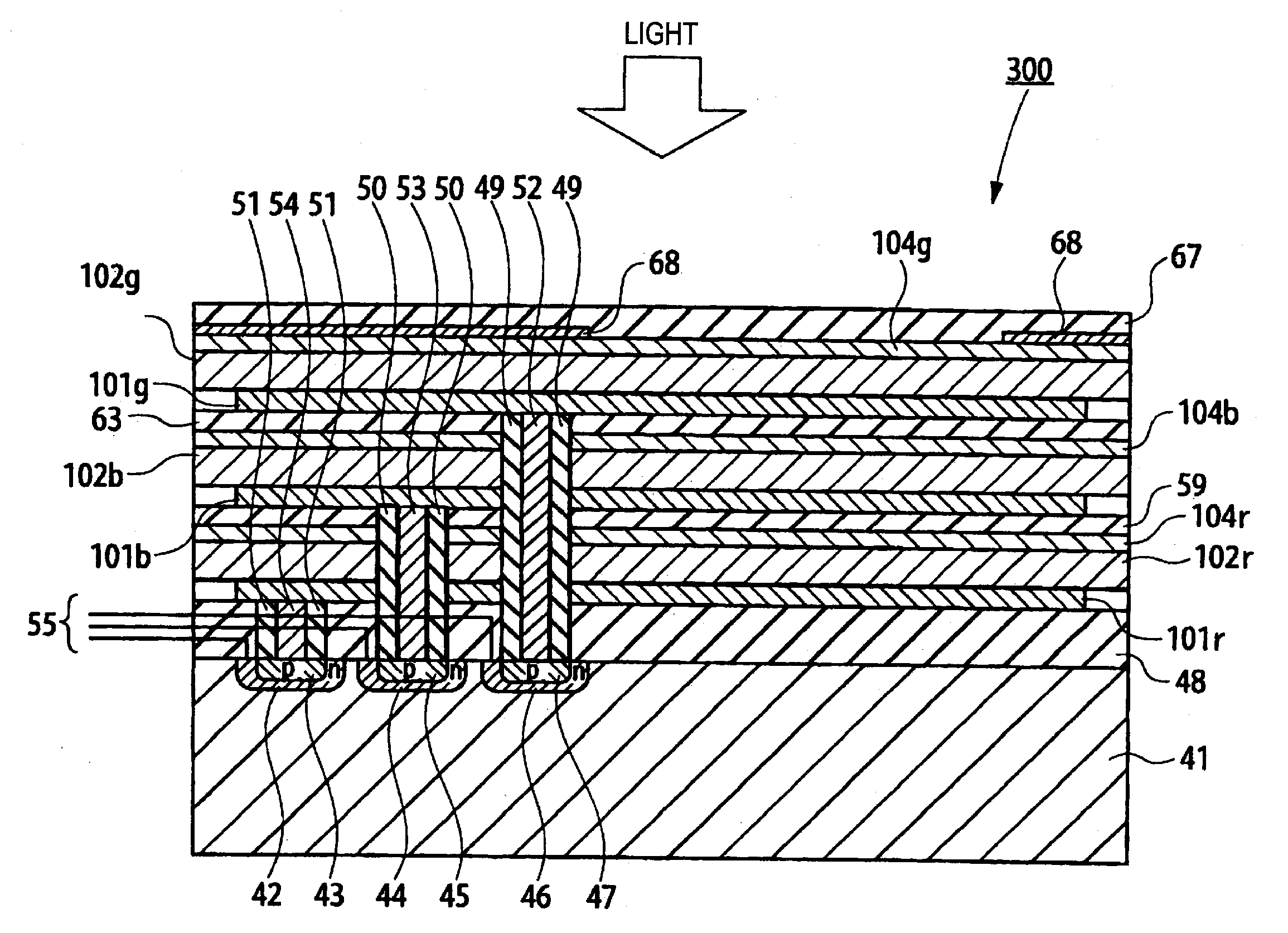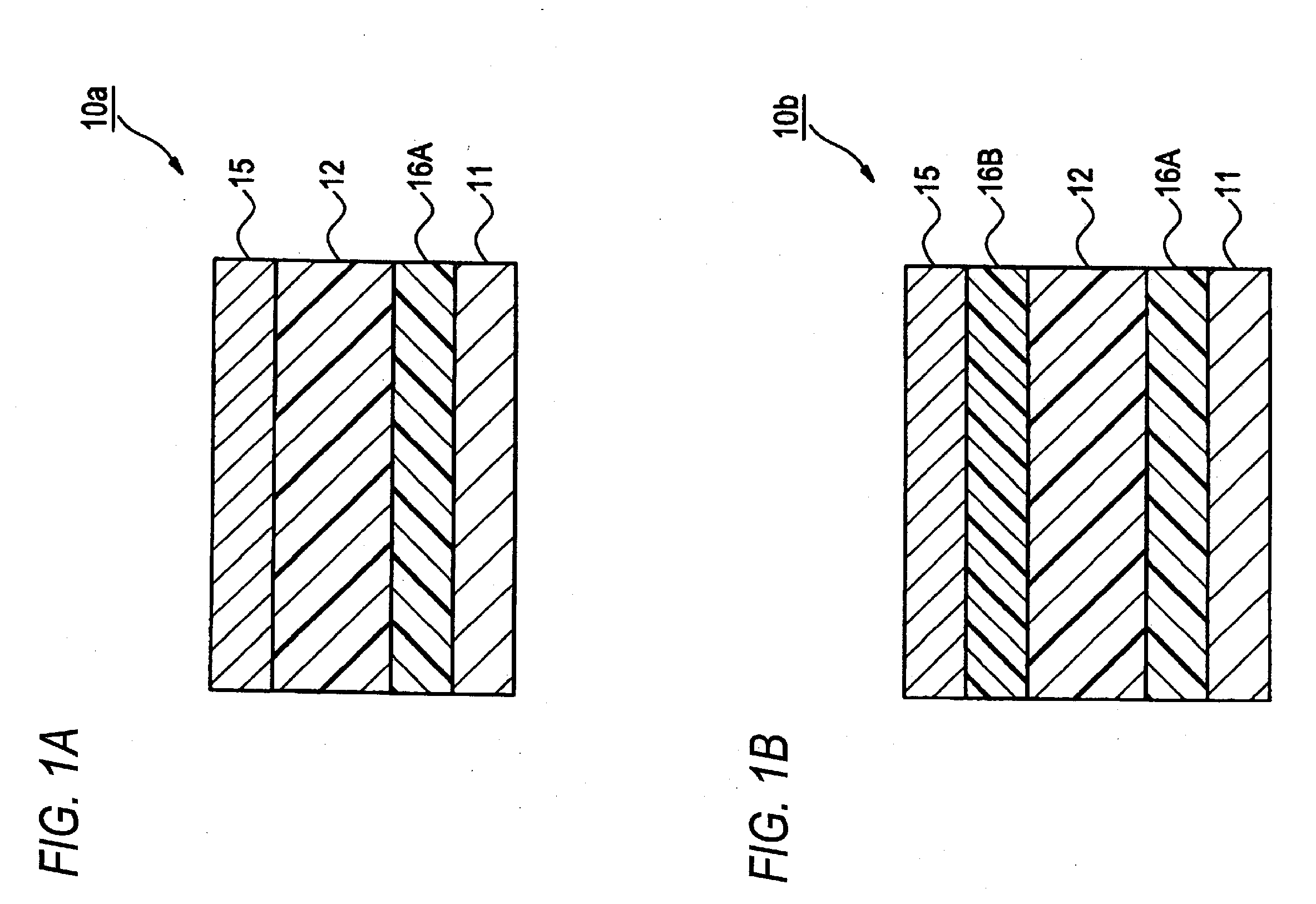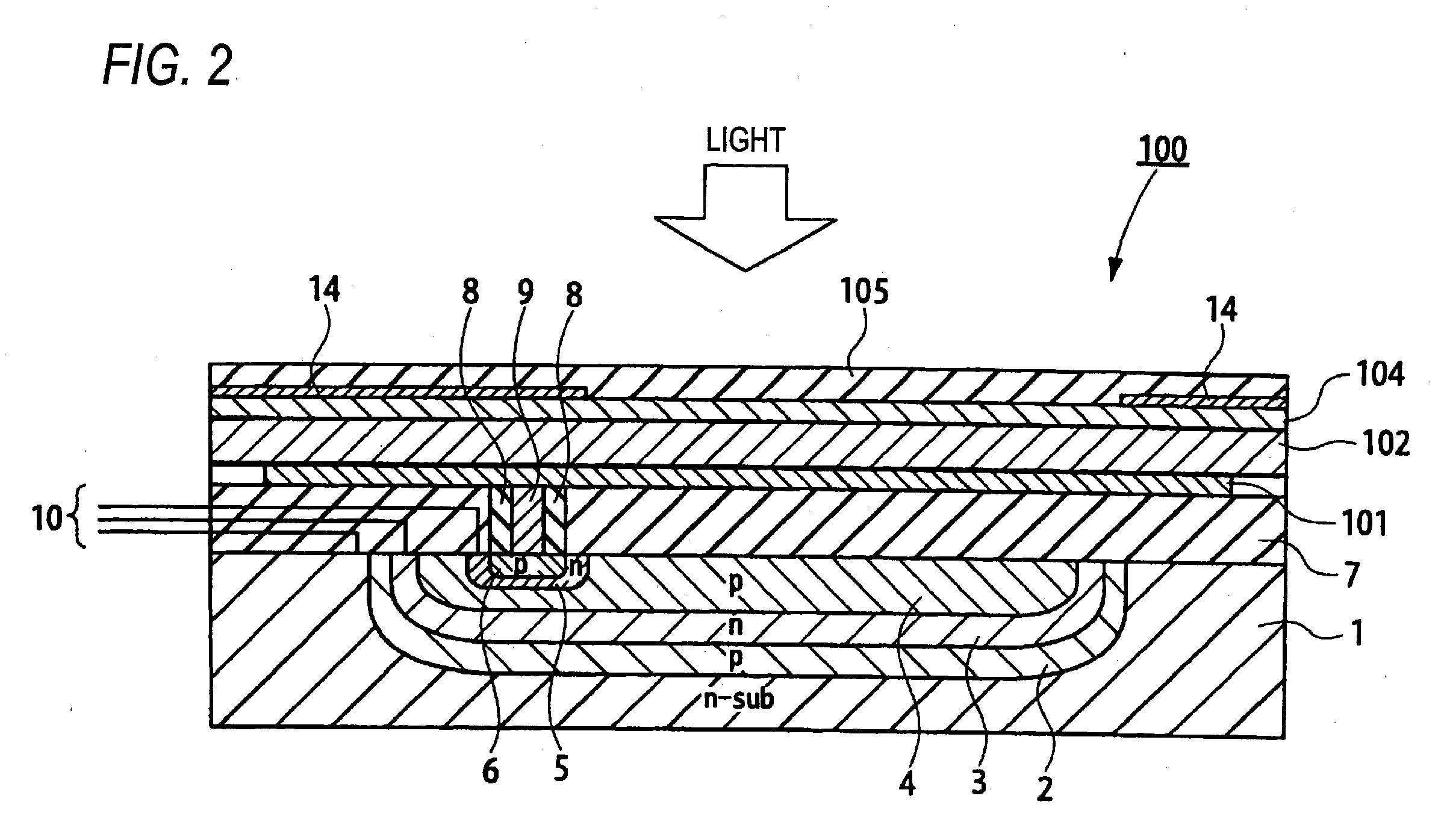Photoelectric conversion device and imaging device
a conversion device and imaging device technology, applied in thermoelectric devices, solid-state devices, nano-informatics, etc., can solve the problems of severely restricted structure, achieve high photoelectric conversion efficiency, high charge transportability, and high speed response
- Summary
- Abstract
- Description
- Claims
- Application Information
AI Technical Summary
Benefits of technology
Problems solved by technology
Method used
Image
Examples
synthesis example 1
[0349]Benz[f]indane-1,3-dione was synthesized according to J. Med. Chem., Vol. 16, paragraphs 1334 to 1339 (1973), and 2 g of this sample and 3.1 g of 4-(N,N-diphenylamino)benzaldehyde were heated with stirring in 20 ml of ethanol under reflux for 6 hours. After cooling to room temperature, the obtained crystal was separated by filtration, washed and recrystallized from chloroform-acetonitrile to obtain 4.3 g of Compound (1).
synthesis example 2
[0350]9H-Tribenz[b,d,f]azepine was synthesized according to J. Org. Chem., Vol. 56, paragraphs 3906 to 3908 (1991), and 3.2 g of this sample, 2 g of 2,6-dibromoanthracene, 1.4 g of tert-butoxysodium, 50 ml of xylene and 250 mg of bis(tri-tert-butylphosphine)palladium(0) were refluxed for 5 hours under nitrogen. After cooling to room temperature, 150 ml of methanol was added, and the obtained crystal was filtered, washed with acetonitrile and dispersed in 30 ml of toluene and 50 ml of water, and the dispersion was stirred for 1 hour, filtered and washed sequentially with acetonitrile and with toluene to obtain 4.2 g of Compound (6).
synthesis example 3
[0351]3,6-Di-tert-butylcarbazole was synthesized according to ORGANIC LETTERS, Vol. 9, paragraphs 797 to 800 (2007), and 3.3 g of this sample, 0.2 g of palladium acetate, 9 g of cesium carbonate, 1 g of tri-tert-butylphosphine, 50 ml of xylene and 5 g of 3,6-dibromo-9-phenylcarbazole were refluxed for 5 hours under nitrogen. After cooling to room temperature, 100 ml of water was added, and extraction with 100 ml of toluene was performed. The concentrated residue was purified by silica gel column chromatography using a toluene-hexane mixed solvent, and the solution was concentrated. Thereafter, 50 ml of methanol was added to the residue, and the obtained crystal was filtered and washed with acetonitrile to obtain 6 g of Compound (2).
PUM
 Login to View More
Login to View More Abstract
Description
Claims
Application Information
 Login to View More
Login to View More - R&D
- Intellectual Property
- Life Sciences
- Materials
- Tech Scout
- Unparalleled Data Quality
- Higher Quality Content
- 60% Fewer Hallucinations
Browse by: Latest US Patents, China's latest patents, Technical Efficacy Thesaurus, Application Domain, Technology Topic, Popular Technical Reports.
© 2025 PatSnap. All rights reserved.Legal|Privacy policy|Modern Slavery Act Transparency Statement|Sitemap|About US| Contact US: help@patsnap.com



